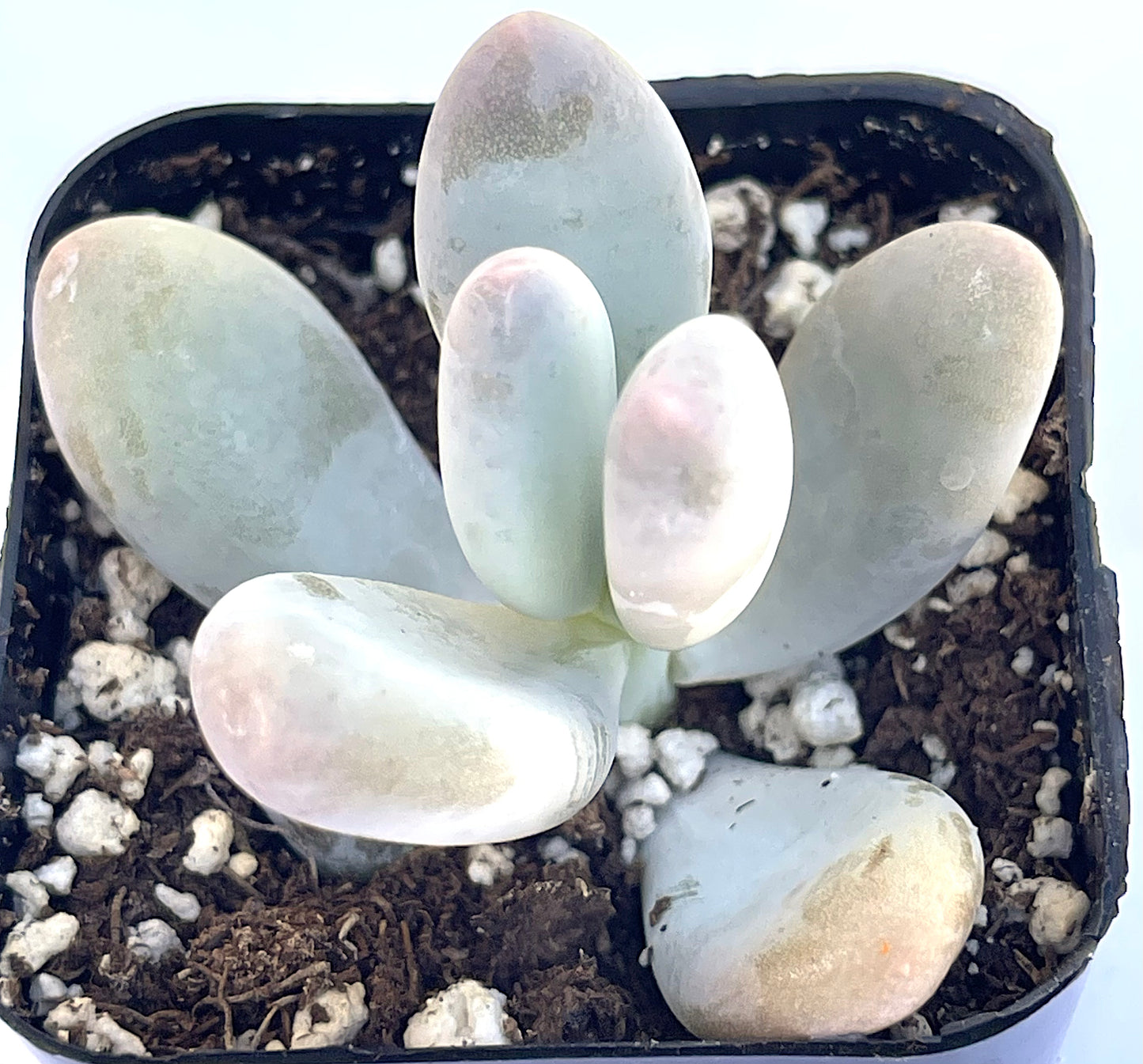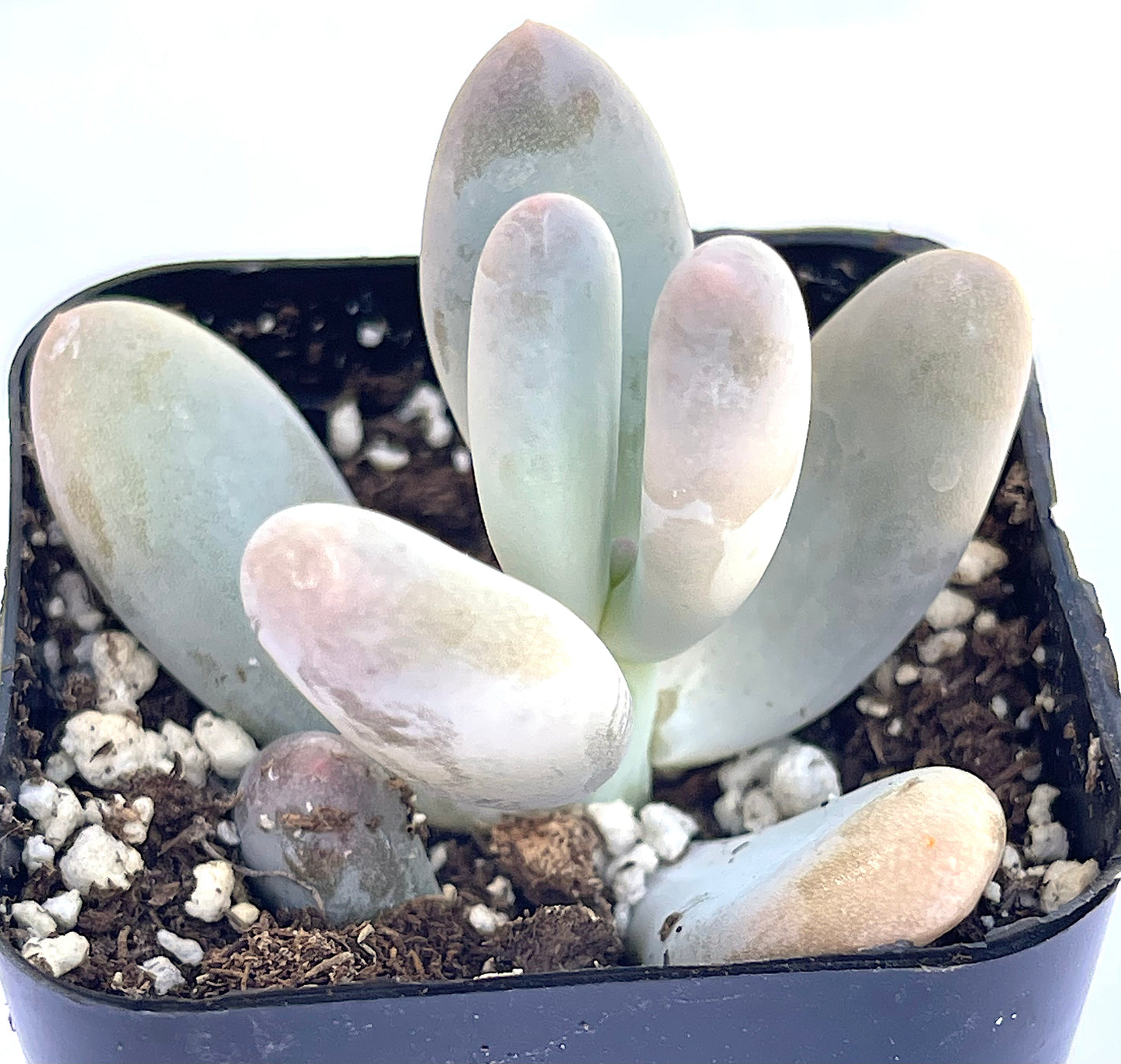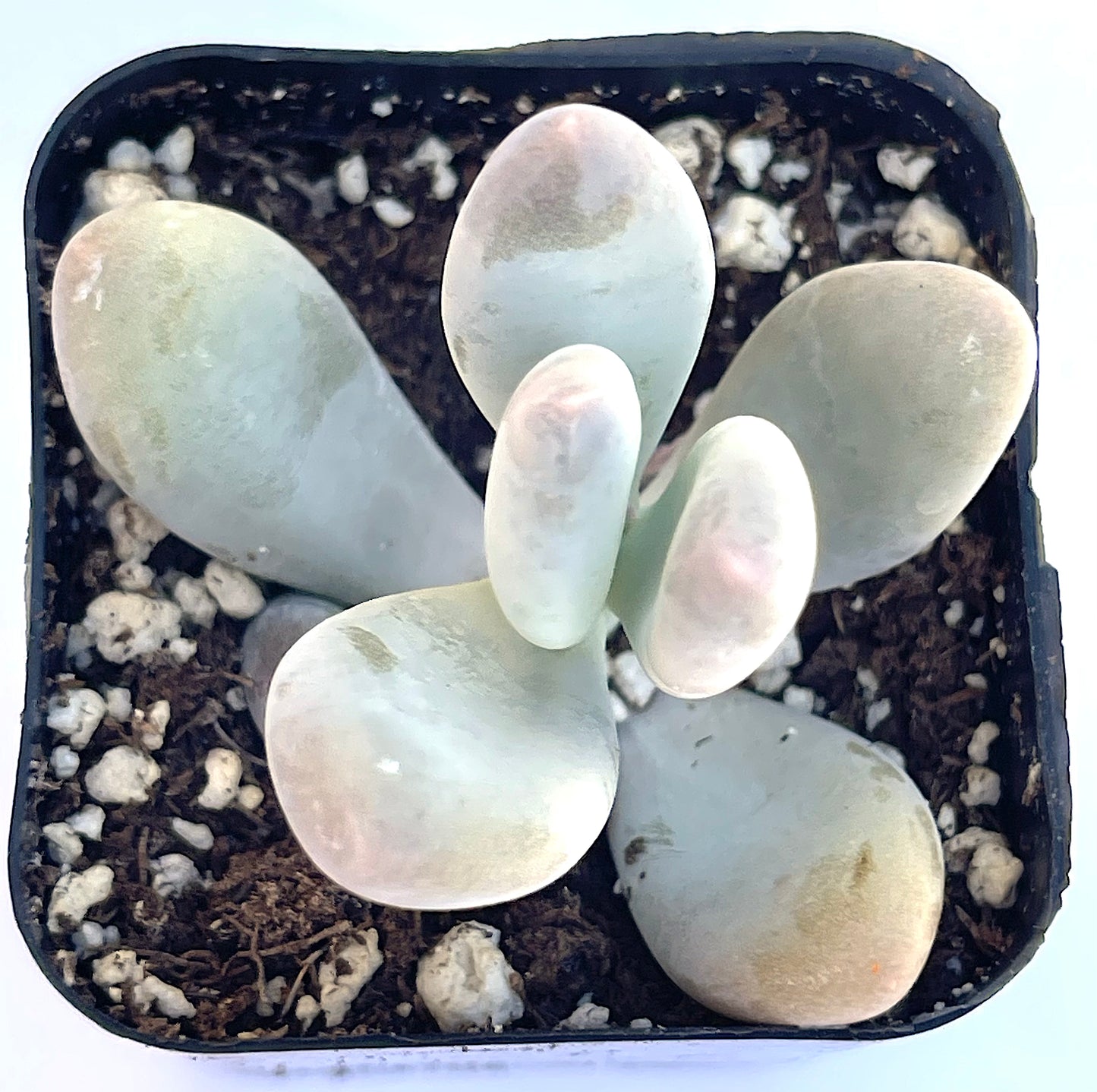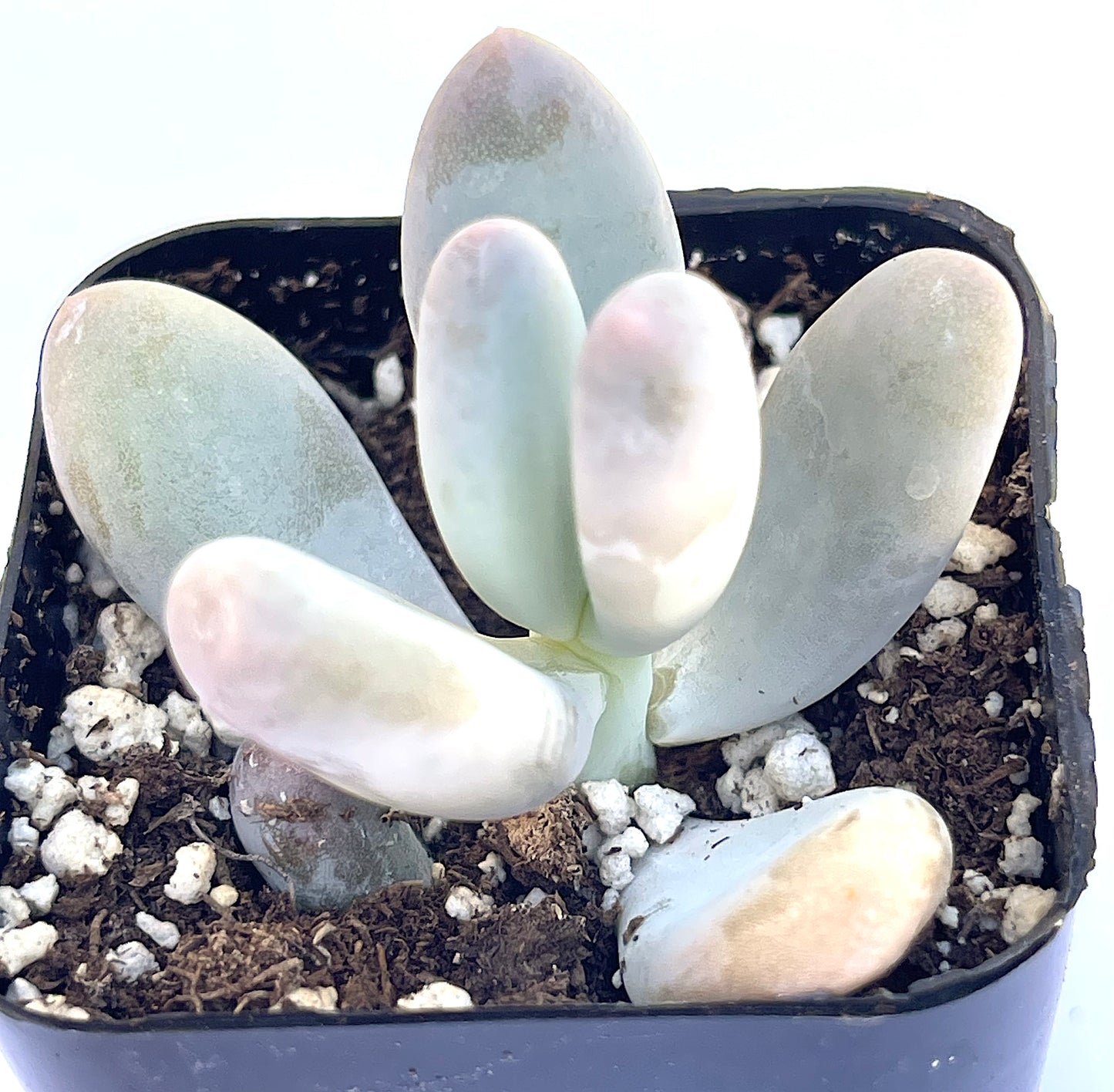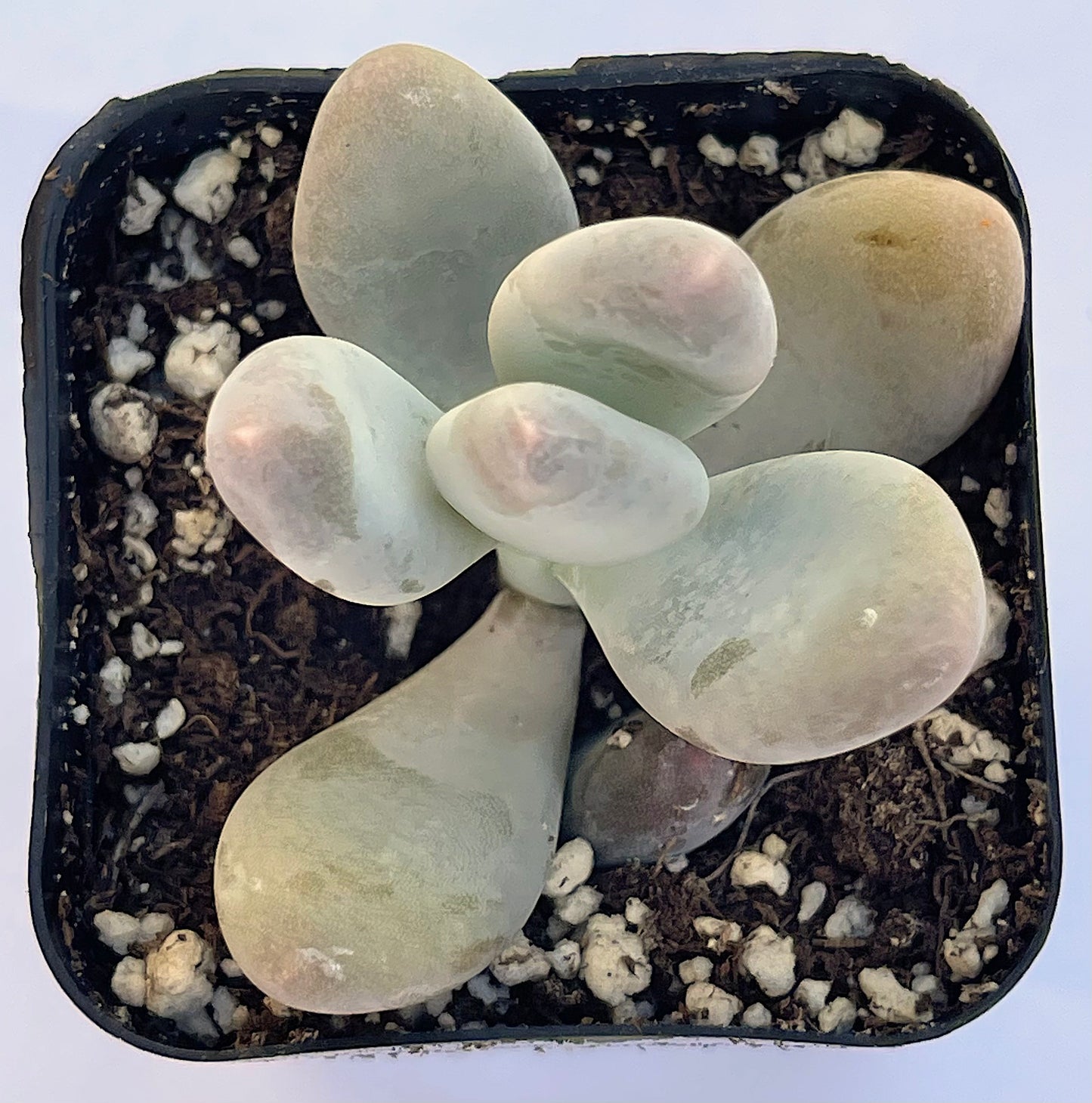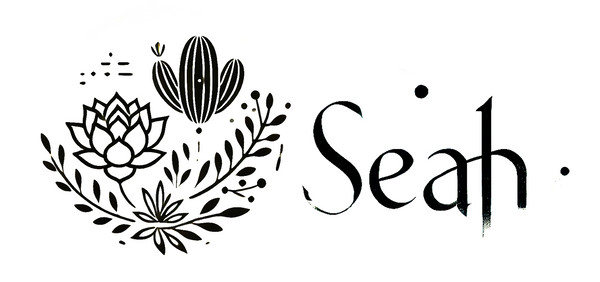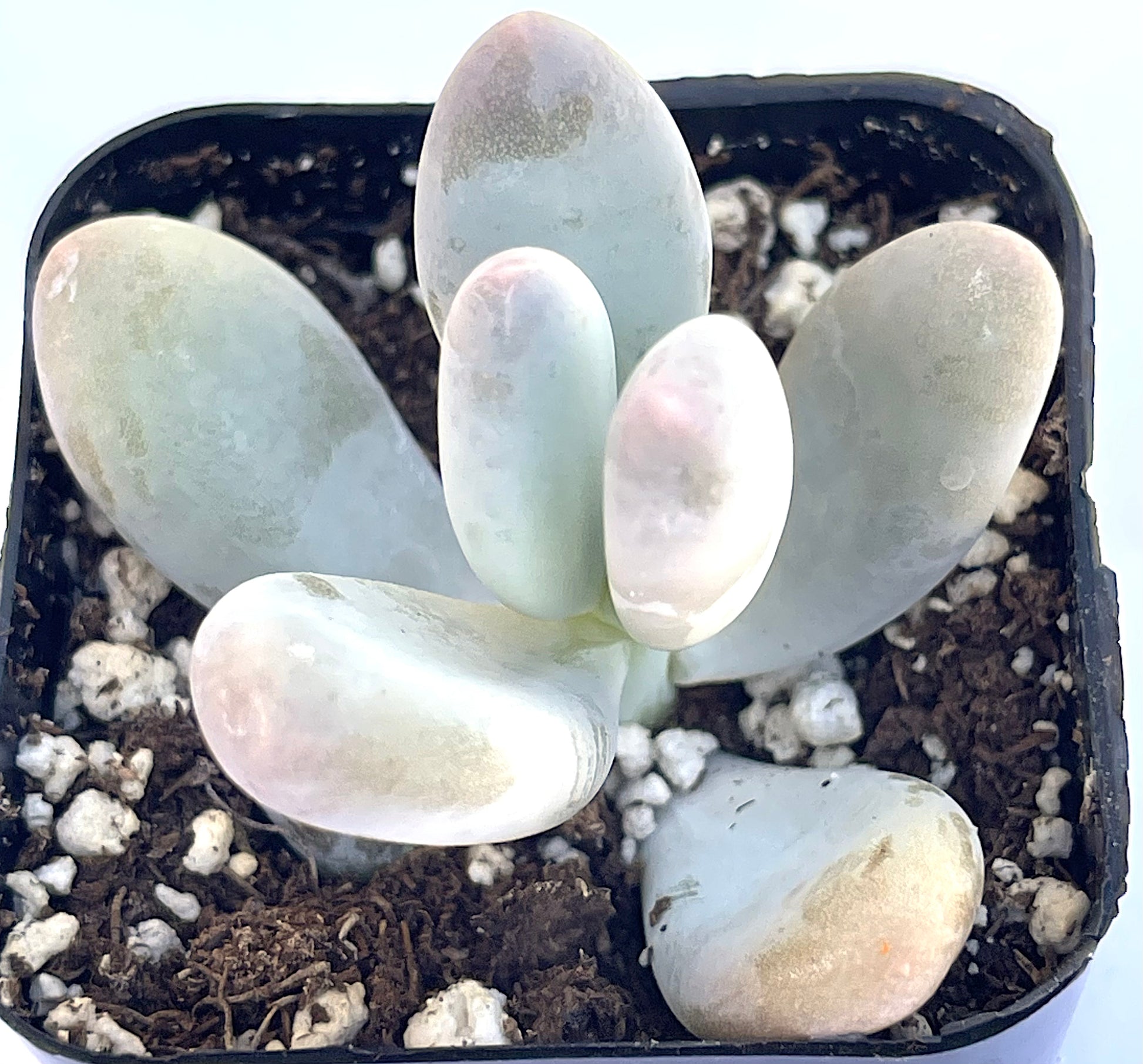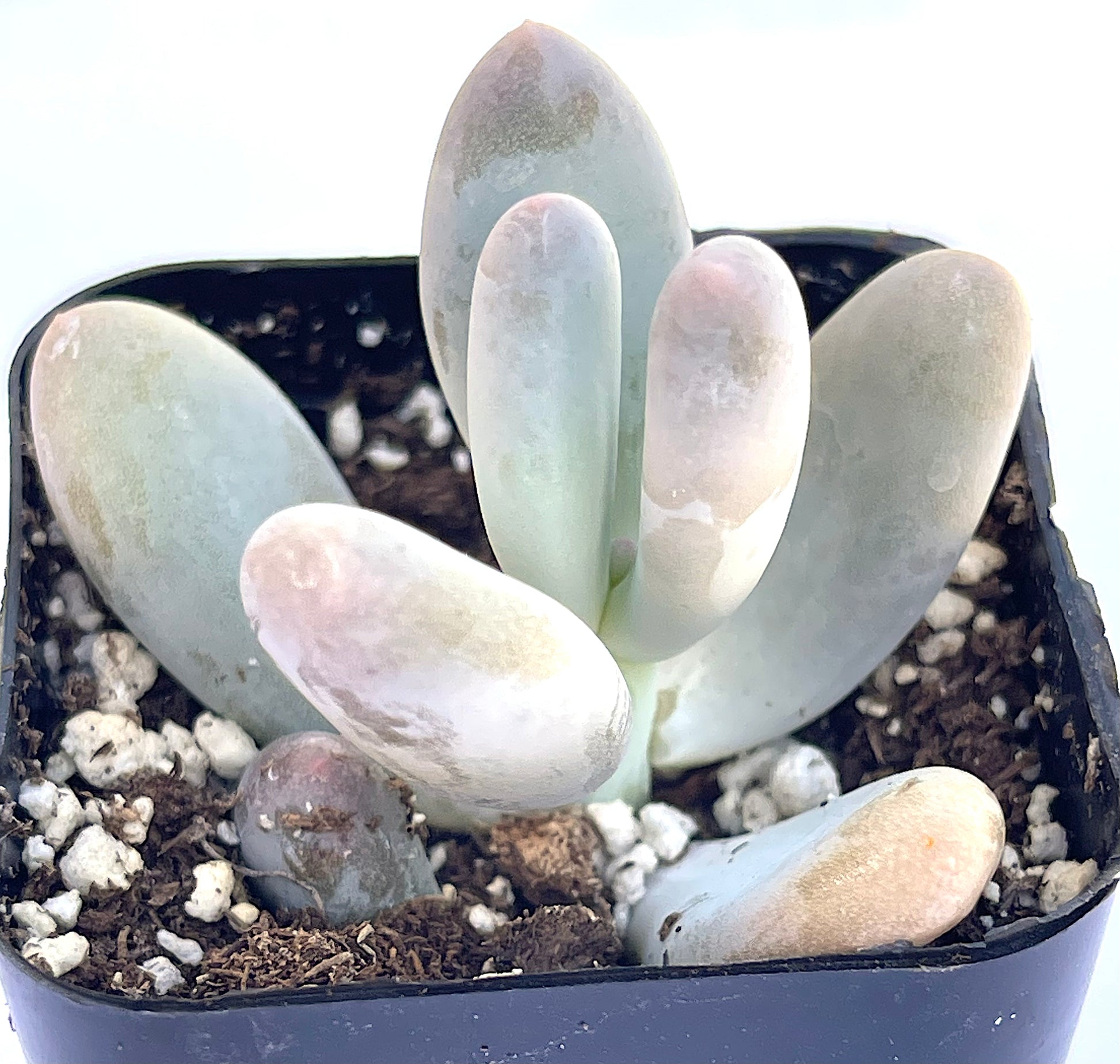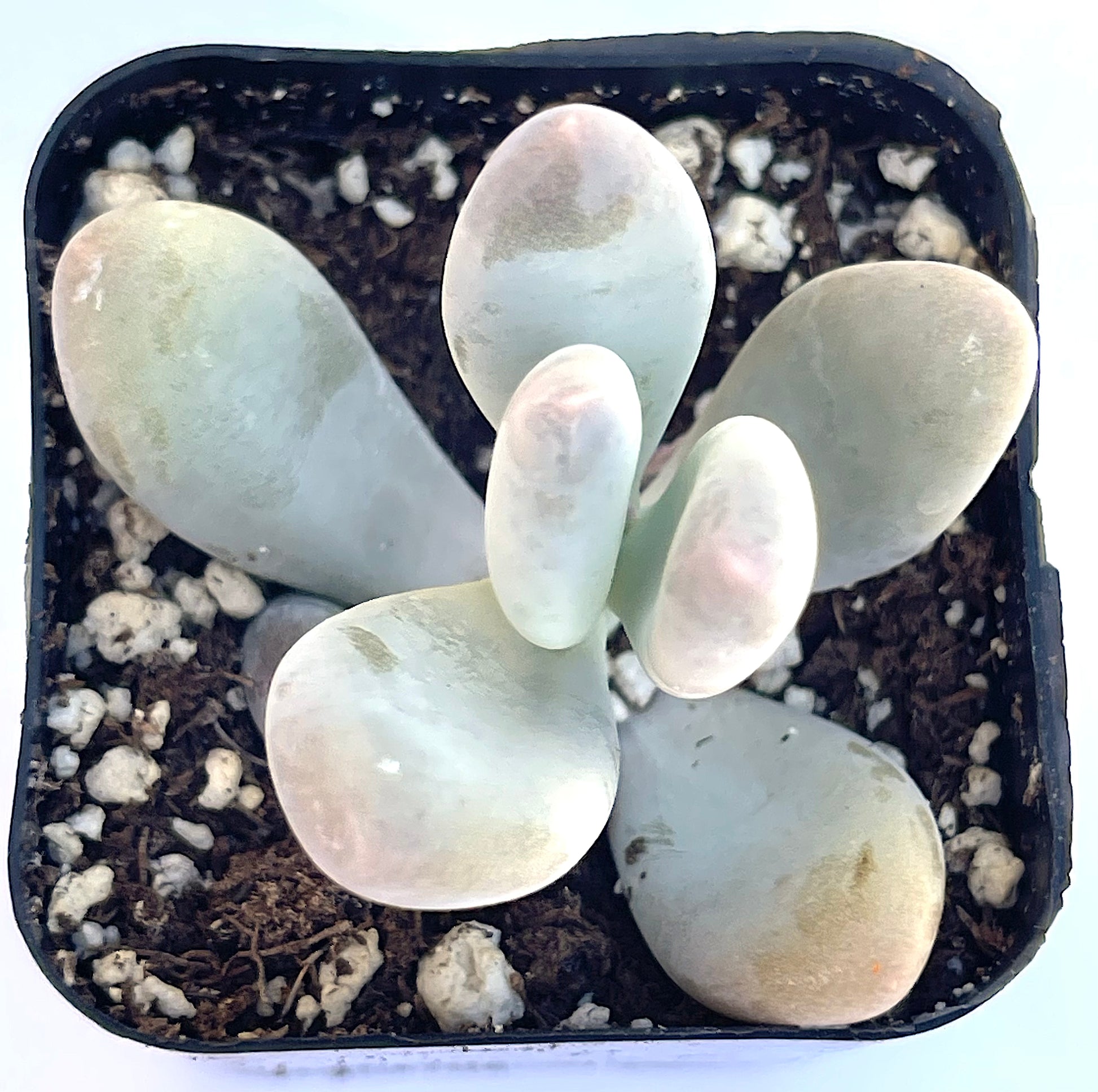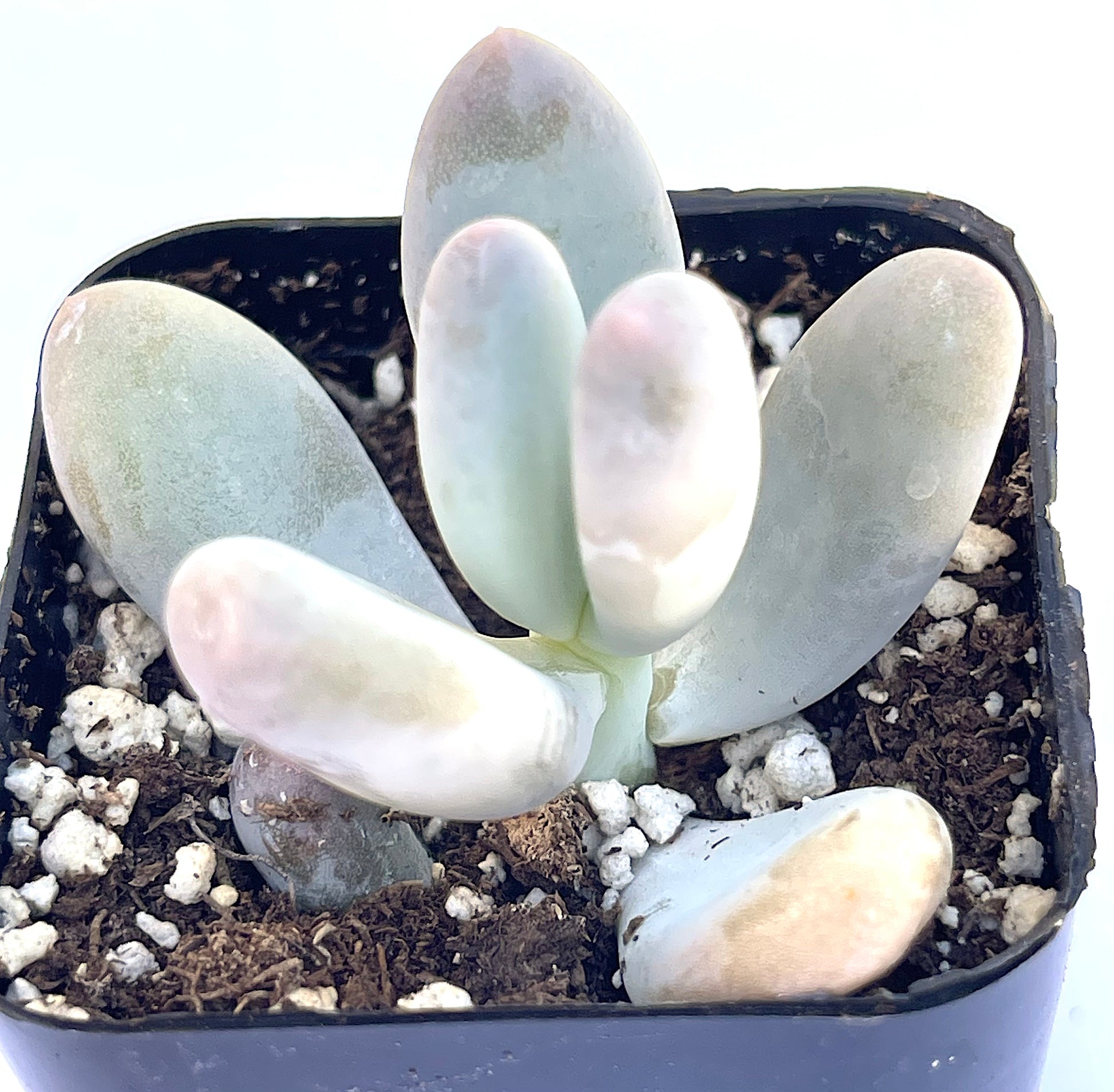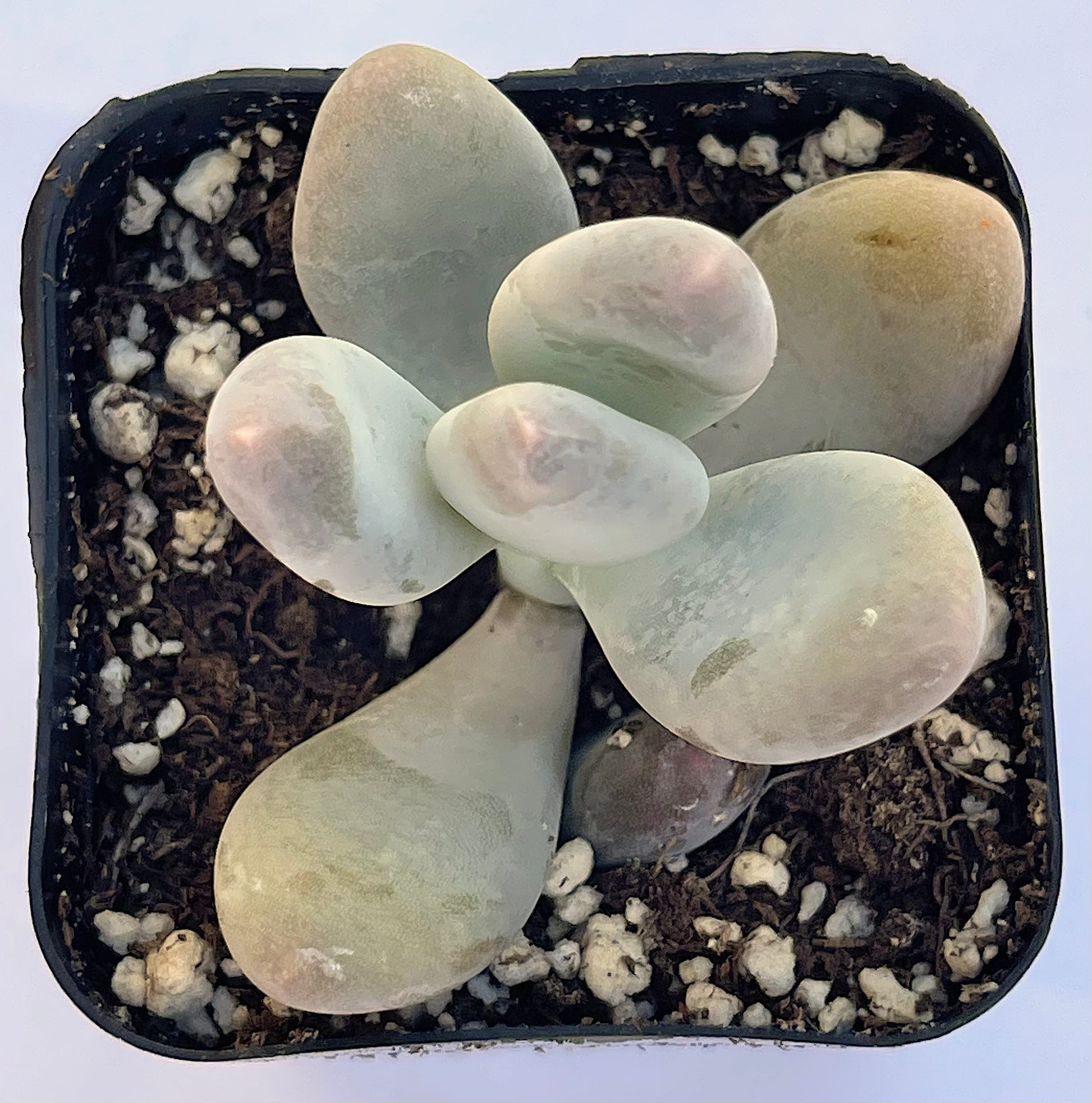SEAH
pachyphytum oviferum - Lavender Pebbles
pachyphytum oviferum - Lavender Pebbles
Precio habitual
$2.99 USD
Precio habitual
$4.99 USD
Precio de oferta
$2.99 USD
Precio unitario
/
por
Los gastos de envío se calculan en la pantalla de pago.
No se pudo cargar la disponibilidad de retiro
Pachyphytum oviferum, commonly known as Lavender Pebbles or Moonstones, is a visually striking succulent prized for its unique appearance. Below is a detailed exploration of its morphological characteristics, growth habits, maintenance points, and reproduction methods:
Morphological Characteristics
- Leaves: Pachyphytum oviferum is most notable for its chubby, oval-shaped leaves that resemble smooth pebbles. The leaves are a soft, pale blue-green color, often with a lavender or pinkish tint, especially when exposed to sunlight or during stress conditions. The leaf surface is powdery, contributing to its distinctive coloration.
- Size: The plant forms low, compact rosettes that can grow up to 10 cm (about 4 inches) in diameter. The stout stems hold the rosettes slightly off the ground.
- Flowers: It blooms in late winter to early spring, producing slender flower spikes adorned with small, bell-shaped flowers. The flowers are typically orange or reddish, creating a beautiful contrast with the pastel foliage.
Growth Habits
- Light: Prefers bright, indirect light. While it can tolerate some direct sunlight, too much can cause leaf scorch. The color of the leaves intensifies with adequate light exposure.
- Temperature: It thrives in warmer temperatures but can tolerate cooler conditions down to about -1°C (30°F) for short periods. Protection from frost is necessary.
- Water: Like most succulents, Pachyphytum oviferum requires minimal watering. Allow the soil to completely dry out between watering sessions. Overwatering can lead to root rot.
Maintenance Points
- Soil: Requires well-draining soil. A cactus or succulent potting mix is ideal.
- Pot: Use a pot with drainage holes to prevent water accumulation at the bottom.
- Fertilizer: Feeding is rarely necessary, but a diluted, balanced fertilizer can be applied once during the growing season (spring or summer) to encourage growth.
- Pruning: Pruning is not typically needed, though you may wish to remove any dead or damaged leaves to maintain the plant's appearance.
Reproduction Method
- Leaf cuttings: Pachyphytum oviferum is easily propagated from leaf cuttings. Gently twist a leaf from the stem, ensuring it's a clean pull. Let the leaf callous over for a few days, then place it on top of well-draining soil. Roots and a new plant will eventually form from the base of the leaf.
- Offsets: This plant may also produce offsets or "pups" that can be separated and replanted. Offsets usually form at the base of the parent plant and can be gently removed once they've grown large enough.
- Seeds: While propagation from seeds is possible, it's less common due to the slow growth rate and the easier alternative methods of leaf cuttings or offsets.
Lavender Pebbles is celebrated for its ornamental value, adding a touch of whimsy and color to succulent collections, rock gardens, and indoor plant displays. Its easy-care nature and distinctive appearance make it a favorite among succulent enthusiasts.
Compartir
